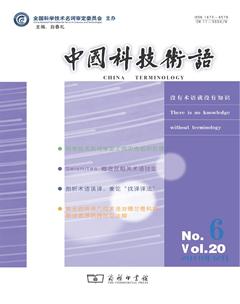结合青藏高原东缘湖沼地震学研究进展浅议“震积岩”一词之去留
摘要:有关震积岩一词的去留,文章尝试从术语本身的含义和大家已经接受的含义出发,结合青藏高原东缘湖沼地震学研究进展,对震积岩的相关质疑提出了最新的解释。对比分析震积岩和地震岩,认为这两个术语虽接近,但含义存在明显的不同。震积岩是一个意义明确并广为大家接受的术语。
关键词:震积岩;地震岩;湖沼地震学;软沉积物变形
中图分类号:N04;H083;P5文献标识码:ADOI:10.3969/j.issn.1673-8578.2018.06.008
Whether Should the Term Seismites Be Abandoned: Discussions Based on the Recent Advance of Limnic Seismology in the Eastern Tibetan Plateau//JIANG Hanchao
Abstract: This paper attempts to provide seismitess own meaning, which is also the meaning accepted by many researchers. According to the recent advance of limnic seismology in the eastern Tibetan Plateau, the author gives a new explanation on the question of the term seismites. Seismites and the earthquake rocks have different meaning. The term seismites has a clear meaning and has been accepted widely by researchers.
Keywords: seismites; the earthquake rocks; limnic seismology; soft sediment deformation
收稿日期:2018-07-23
作者簡介:蒋汉朝(1973—),男,博士,中国地震局地质研究所研究员,研究方向为新生代地质环境与湖沼地震学。通信方式:hanchaojiang@hotmail.com。
关于震积岩一词,本身没有问题,比较贴切,指的是地震引起沉积物发生变形从而记录地震信号的沉积层。如果改成地震岩,无疑是扩大范围了,也包括地震引起原来的火山岩、变质岩和沉积岩三大类岩石中的一种或几种发生破碎、崩塌而再次沉积到地层中,这样,三大类岩石都包含在地震岩里面了。要知道,原来的seismites主要是沉积岩未固结或半固结的情形下受地震促发产生软沉积物变形后形成的。显然,地震岩不是震积岩原来的意思,也不是当下相关研究者所认为和接受的意思。
近年来,笔者带领课题组成员主要针对青藏高原东缘构造活跃地区的湖相地层开展工作,当然也包含湖相层顶、底的粗颗粒沉积,如砾石层。通常,我们界定震积岩有这样几条:(1)研究区为构造活跃地区,(2)湖相沉积由潜在可液化的粉砂和黏土组成,(3)变形层被非变形层分隔并在横向上沿走向可远距离追踪,(4)部分软沉积物变形与最近地震产生的或实验模拟的类型可比较,(5)部分类型在垂向上重复出现,(6)研究区重力流或垮塌可以被排除等要素。如果仅根据个别地区不符合上面这些判定条件的个例就提出要否定前人大量震积岩工作和震积层概念,显然不妥。
关键问题在于提出质疑甚至否定的研究人员并没有明确而直接的证据,如果仅仅根据一两个归不进上述几条的限制性判断条件的野外现象[1],很大程度上会抑制大量可以被认真研究并很有可能就是地震所致的软沉积物变形的识别工作。我们课题组最近从三个方面入手开展研究工作:构造活跃地区的堰塞湖成因,地震引起沉积物源变化从而使得高分辨率沉积指标变化可以记录地震信号,与高分辨率指标变化相伴生的软沉积物变形。
在堰塞湖成因方面,四川茂县刁林堰塞湖的湖相沉积底部不具有水流作用的粒序变化和相应的沉积层理,而很可能是来自对岸缺少分选和磨圆的大小砾石混杂堆积,结合光释光和孢粉浓缩物测年分析,推测该堰塞湖可能是公元638年当地一次地震所致[2]。
在软沉积物变形方面,四川理县厚23.4 m的湖相沉积序列中出现了碎屑脉、球-枕构造、火焰状构造、碎屑小砾石、微断层和滑动褶皱6种软沉积物变形。考虑前述六个方面的判定要素,推测理县湖相沉积的长序列可能揭示了当地24次古地震事件[3]。
在高分辨率沉积指标分析方面,从湖相沉积物的物源入手,分析了茂县叠溪新磨村剖面的湖相沉积物的稀土元素、石英颗粒扫描电镜照片和粒度分布特征,提出这些干旱-半干旱地区的湖相细颗粒沉积为风力搬运[4-5]。这不仅受到该剖面主、微量元素细致分析[6]和岷江上游降雨、滑坡特征分析[7]的支持,也与最近东亚晚新生代湖相沉积物地球化学和粒度分析结果[8-10]一致。其中,新磨村湖相沉积物中的中粗粉砂和砂(>16 μm)含量的突然增加并逐渐降低的特征可能揭示了研究区地震引起的粉尘事件。这不仅表明构造活跃地区的湖相沉积有潜力连续记录古地震活动历史,而且为构造活跃地区的粉尘产生过程提供了新视角[4]。
为进一步追踪更长的地震引起粉尘事件的历史、区域内不同地点之间的粉尘事件是否可对比以及高分辨率沉积指标变化与软沉积物变形之间的相互制约关系,蒋汉朝等 [11]分析了理县厚23.4 m、19.3~6.0 ka的湖相沉积序列,显示高分辨率粒度和磁化率指标变化与软沉积物变形具有较好的相互制约关系,可能揭示了研究区在19.3~6.0 ka期间发生了70次地震事件。谱分析揭示可能对应强震的810年和378年的长周期以及可能对应中小地震的85年和65年短周期。分粒组磁化率测量显示,中粗粉砂(16~32 μm和32~63 μm)相对于其他粒组对磁化率值贡献更大,暗示气候增温变湿导致风化增强为研究区提供更多粗的磁性颗粒[11]。锆石UPb测年研究[12]显示,茂县新磨村湖相沉积与刁林湖相沉积具有颇为相似的粉尘物源,但它们与理县粉尘沉积具有明显不同的物源。这表明即使空间上相距不足100 km,地震引起的粉尘事件更多地影响当地,但范围有限,不具备远距离对比的特征[11]。
上述研究将第四纪地质的研究方法和理论引入古地震研究,与岷江上游过去不足百年就发生5次7级以上地震(叠溪1933,松潘1976,平武北1976,汶川2008,九寨沟2017)的实际情况相符,鉴于此,震积岩一词应当保留,其在未来的科学研究中必将得到进一步检验和推广。
参考文献
[1] Rana N, Sati S P, Sundriyal Y, et al. Genesis and implication of softsediment deformation structures in highenergy fluvial deposits of the Alaknanda Valley, Garhwal Himalaya, India[J]. Sedimentary Geology, 2016(344): 263-276.
[2] Xu H Y, Jiang H C, Yu S, et al. OSL and pollen concentrate 14C dating of dammed lake sediments at Maoxian, east Tibet, and implications for two historical earthquakes in AD 638 and 952[J]. Quaternary International, 2015(371): 290-299.
[3] Jiang H C, Zhong N, Li Y H, et al. Soft sediment deformation structures in the Lixian lacustrine sediments, Eastern Tibetan Plateau and implications for postglacial seismic activity[J]. Sedimentary Geology, 2016(344): 123-134.
[4] Jiang H C, Mao X, Xu H Y, et al. Provenance and earthquake signature of the last deglacial Xinmocun lacustrine sediments at Diexi, East Tibet[J]. Geomorphology, 2014(204): 518-531.
[5] Jiang, H C, Shevenell A, Yu S, et al. Decadalto centennialscale East Asian summer monsoon variability during the Medieval Climate Anomaly reconstructed from an eastern Tibet lacustrine sequence[J]. Journal of Paleolimnology, 2015(54): 205-222.
[6] Liang L J and Jiang H C. Geochemical composition of the last deglacial lacustrine sediments in East Tibet and implications for provenance, weathering and earthquake events[J]. Quaternary International, 2017(430): 41-51.
[7] 李艷豪,蒋汉朝,徐红艳,等. 四川岷江上游滑坡促发因素分析[J]. 地震地质, 2015(37:4): 1147-1161.
[8] Jiang H C and Ding Z L. Eolian grainsize signature of the Sikouzi lacustrine sediments (Chinese Loess Plateau): Implications for Neogene evolution of the East Asian winter monsoon[J]. Geological Society of America Bulletin, 2010(122): 843-854.
[9] Jiang H C, Guo G X, Cai X M, et al. Geochemical evidence of windblown origin of the Late Cenozoic lacustrine sediments in Beijing and implications for weathering and climate change[J]. Palaeogeography, Palaeoclimatology, Palaeoecology, 2016(446): 32-43.
[10] Jiang H C, Wan S M, Ma X L, et al. Endmember modeling of the grainsize record of Sikouzi fine sediments in Ningxia (China) and implications for temperature control of Neogene evolution of East Asian winter monsoon[J]. PLoS ONE, 2017 (12): e0186153.
[11] Jiang H C, Zhong N, Li Y H, et al. A continuous 13.3ka record of seismogenic dust events in lacustrine sediments in the eastern Tibetan Plateau[J]. Scientific Reports, 2017(7:15686), DOI:10.1038/s41598-017-16027-8.
[12] Zhong N, Song X S, Xu H Y, et al. Influence of a tectonically active mountain belt on its foreland basin: Evidence from detrital zircon dating of bedrocks and sediments from the eastern Tibetan Plateau and Sichuan Basin, SW China[J]. Journal of Asian Earth Sciences, 2017(146): 251-264.

